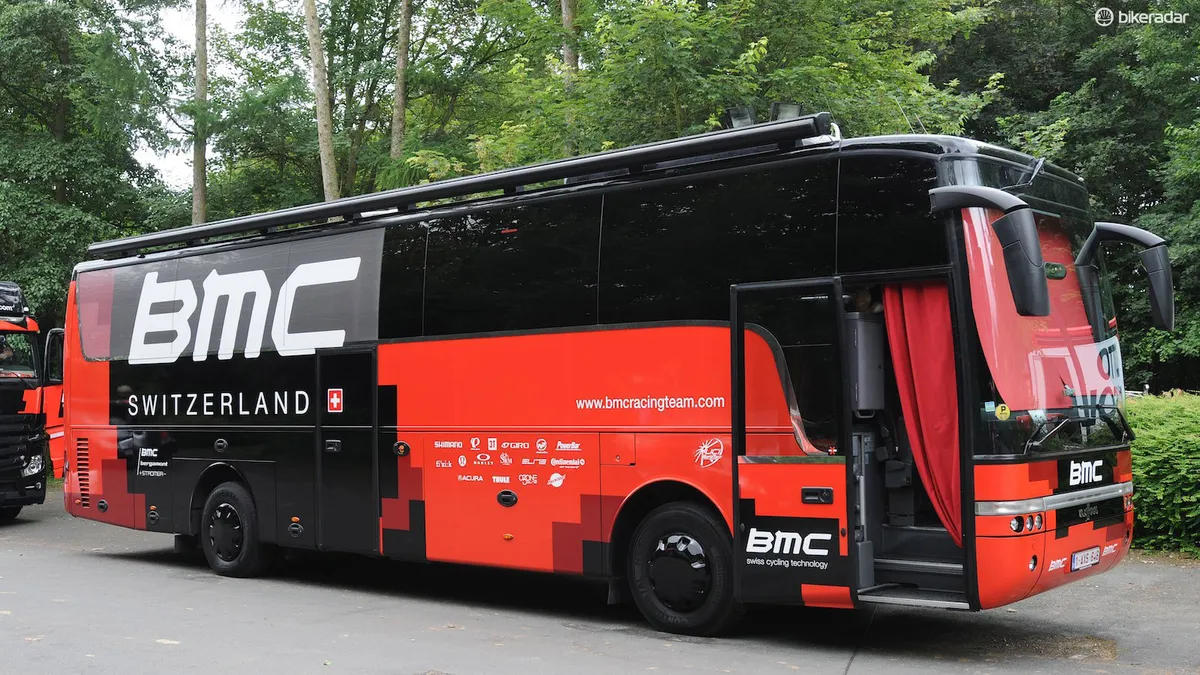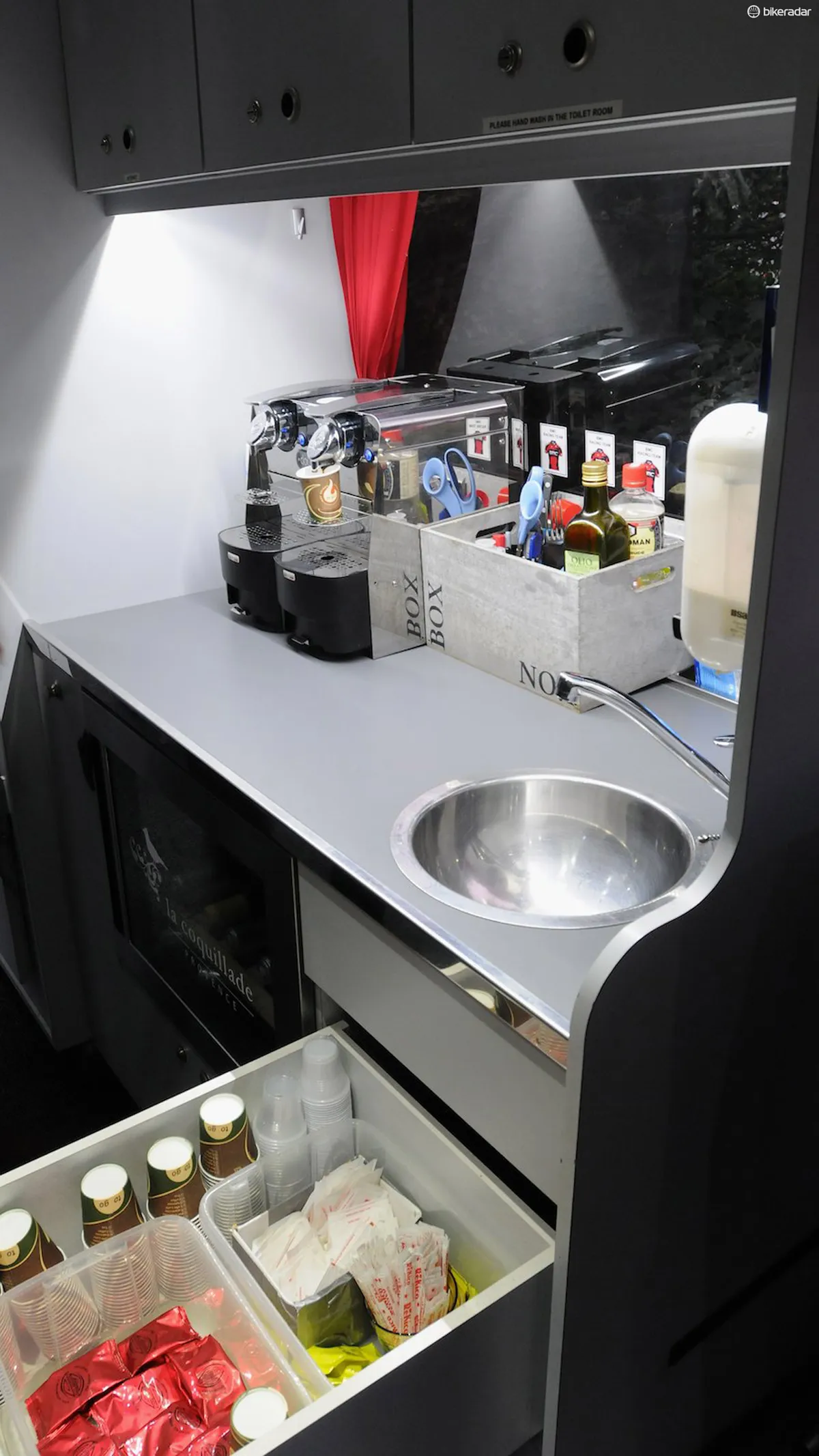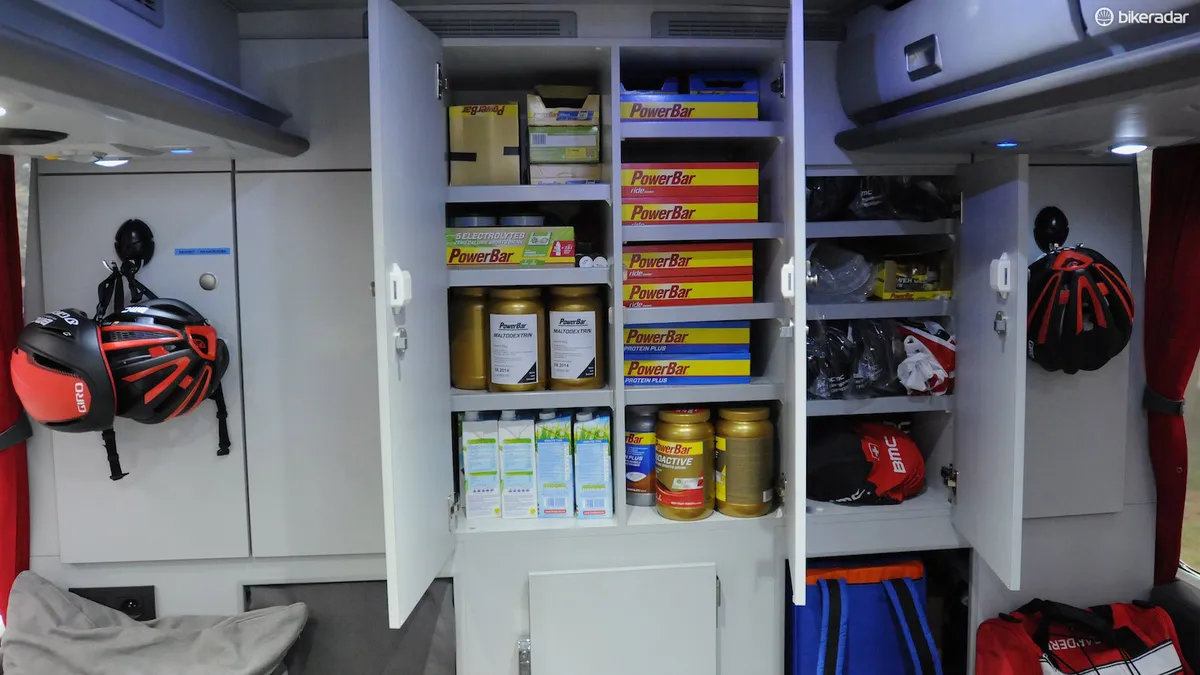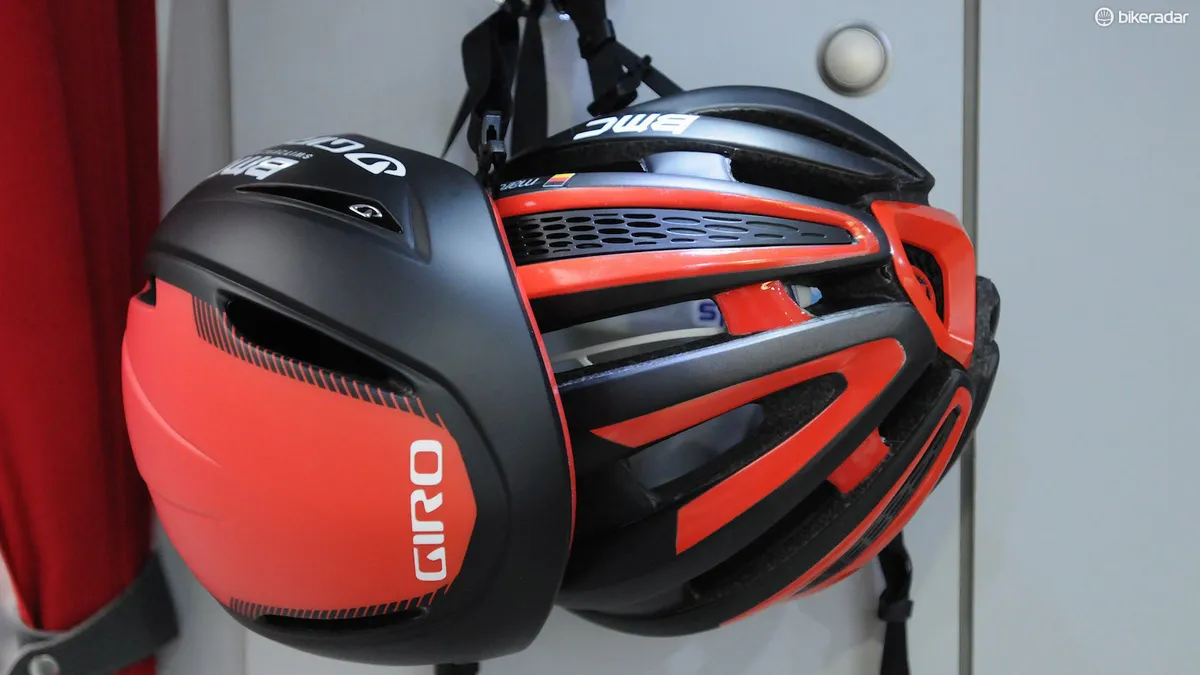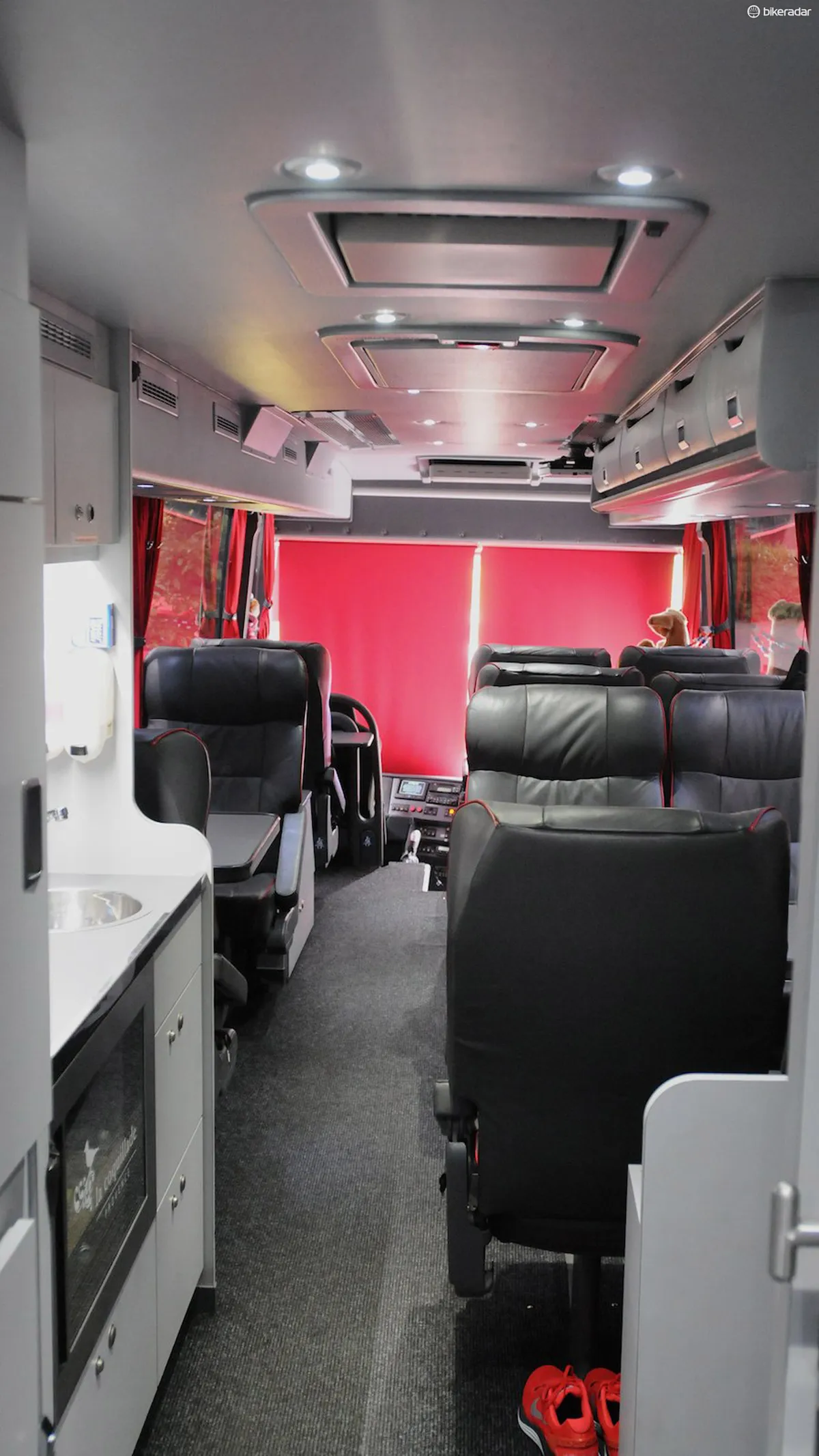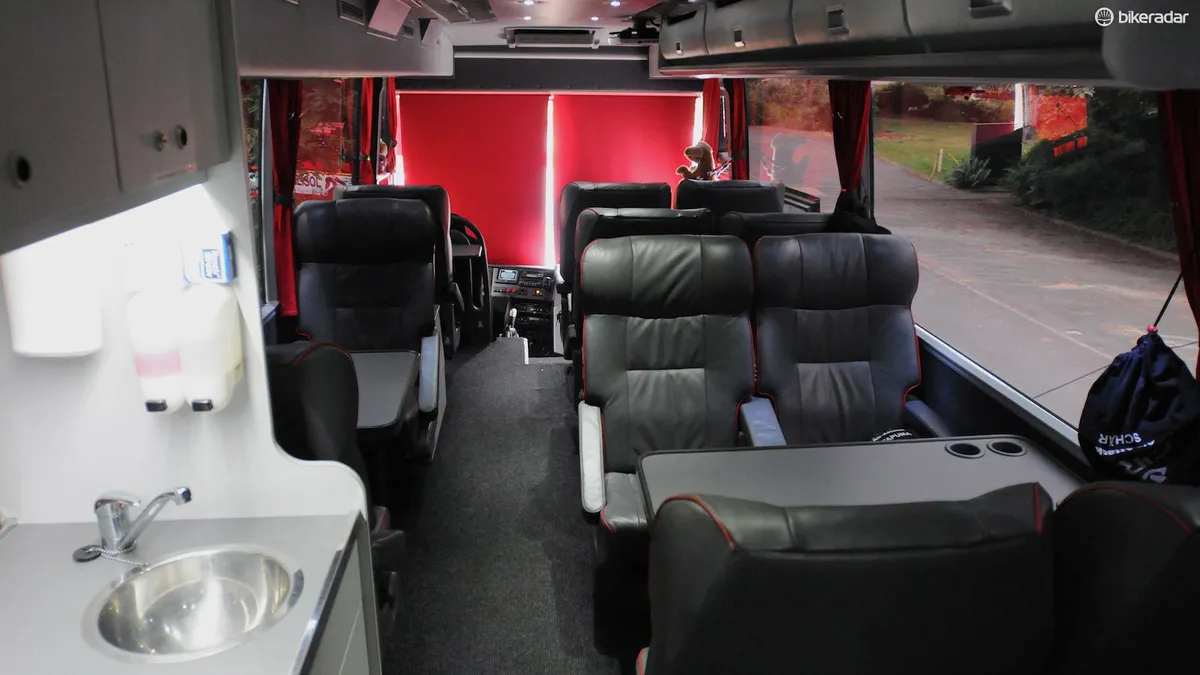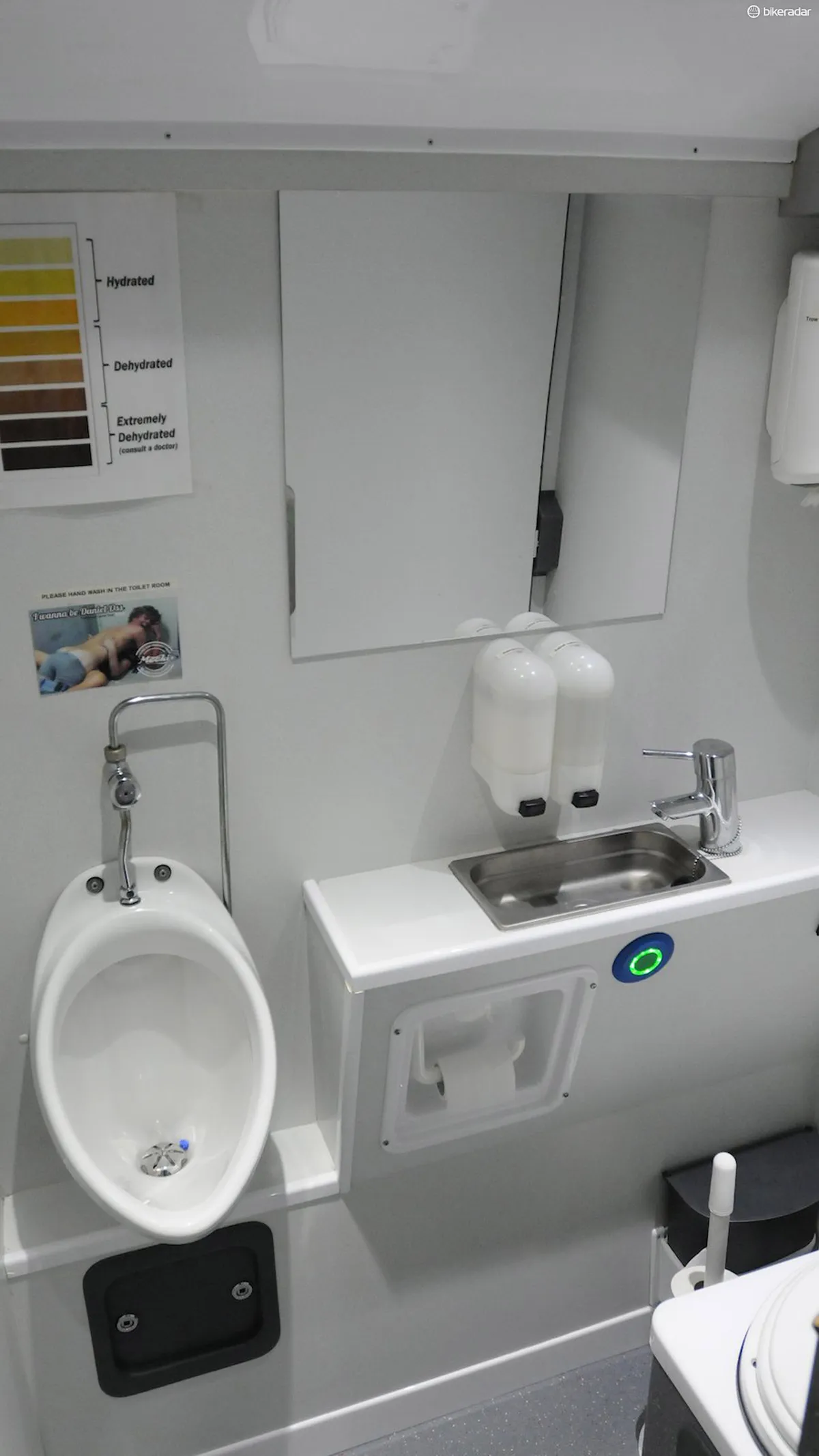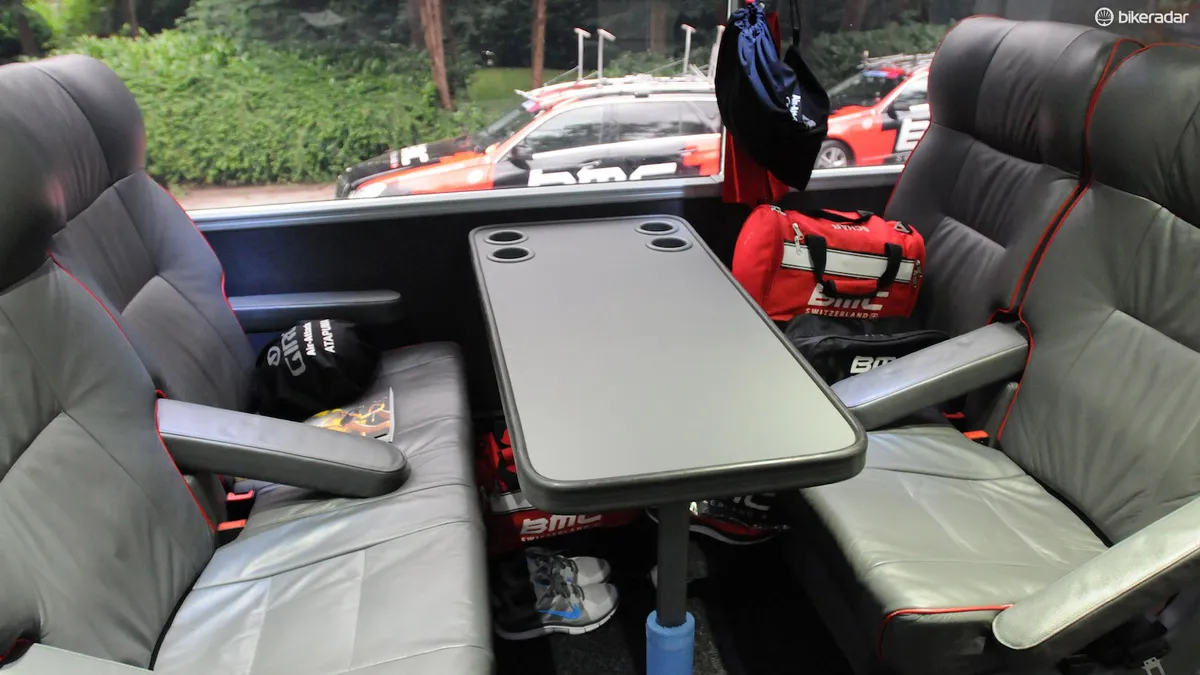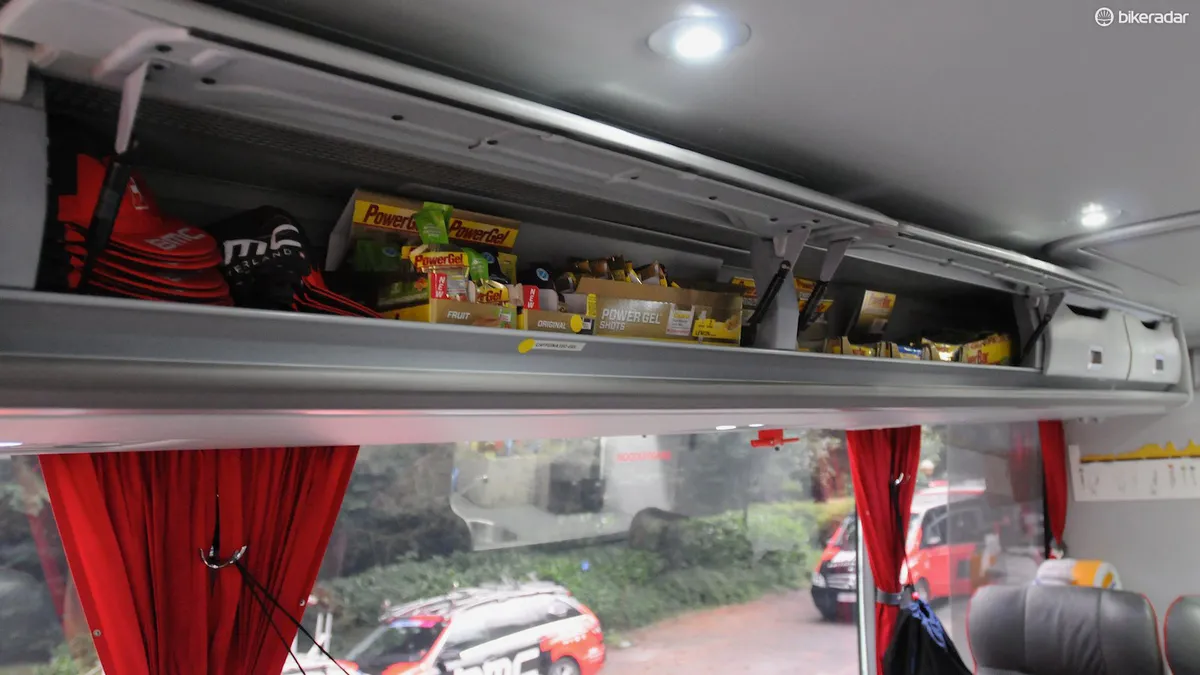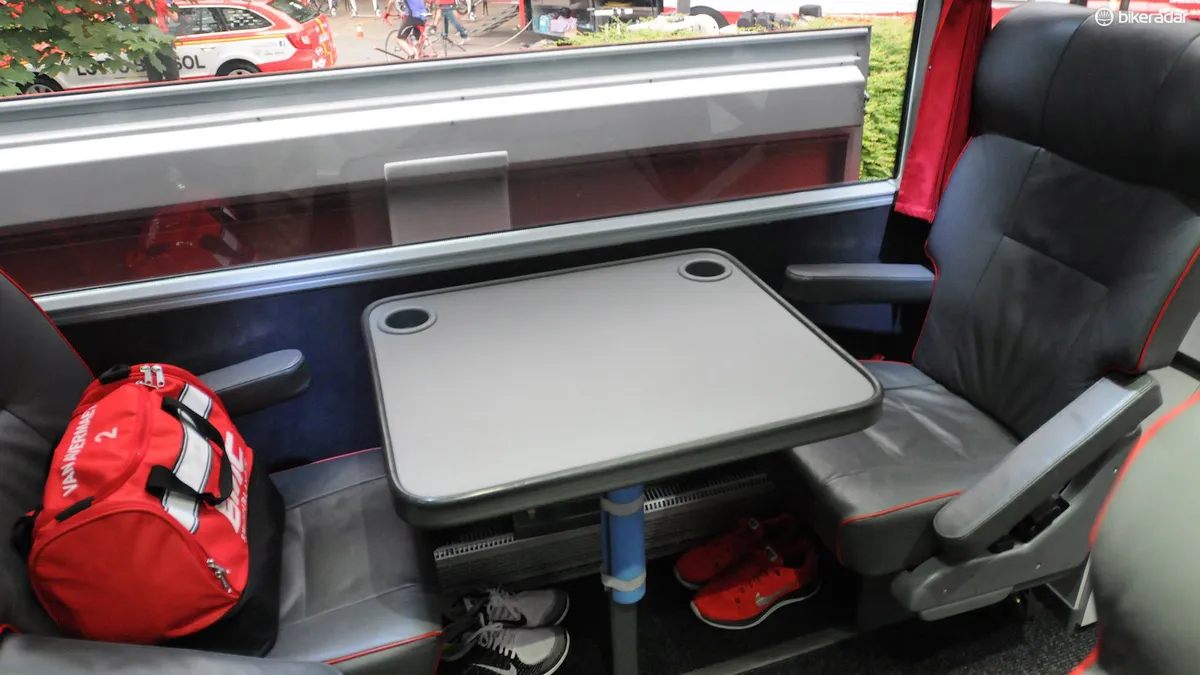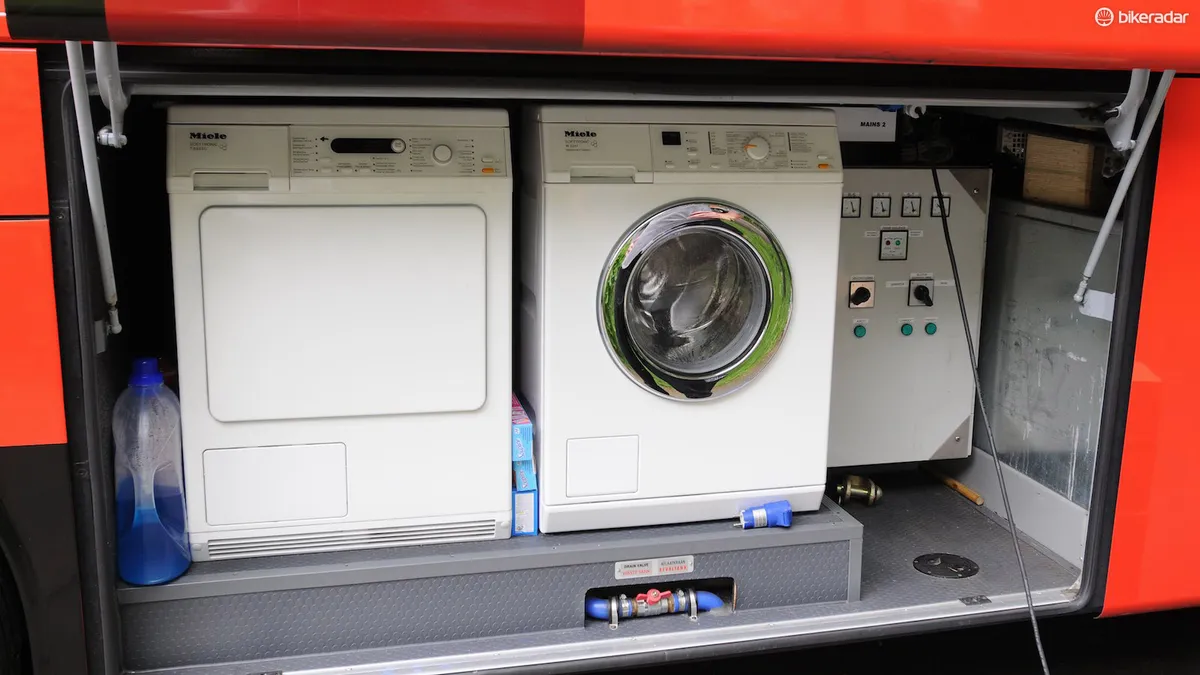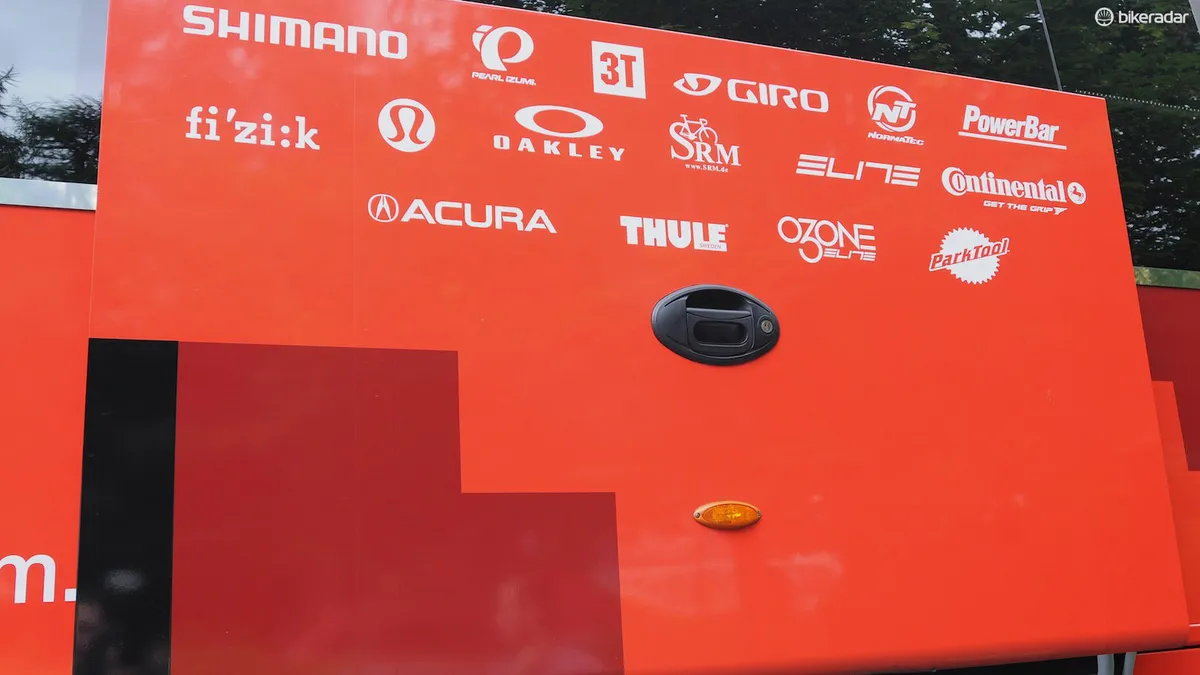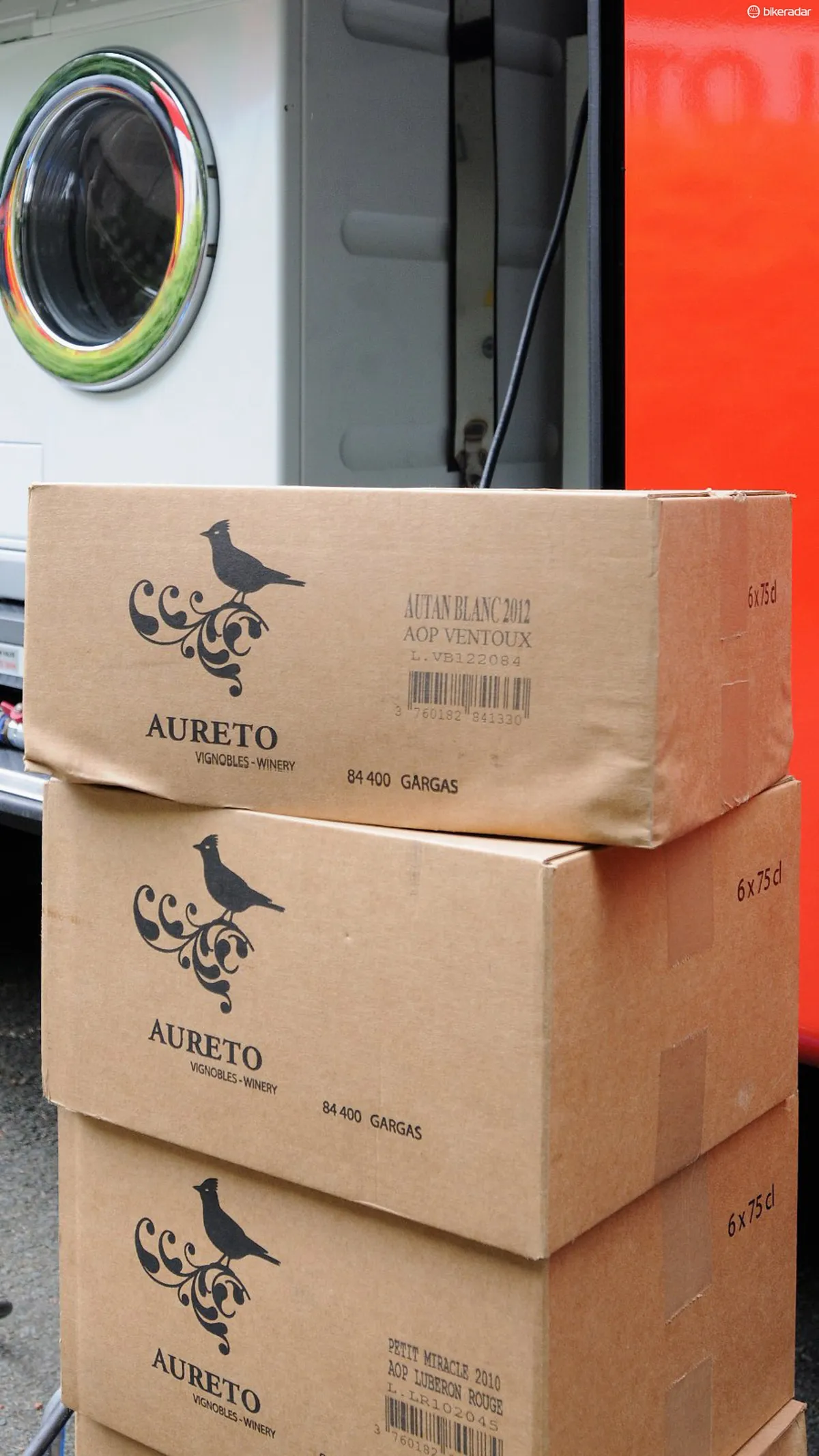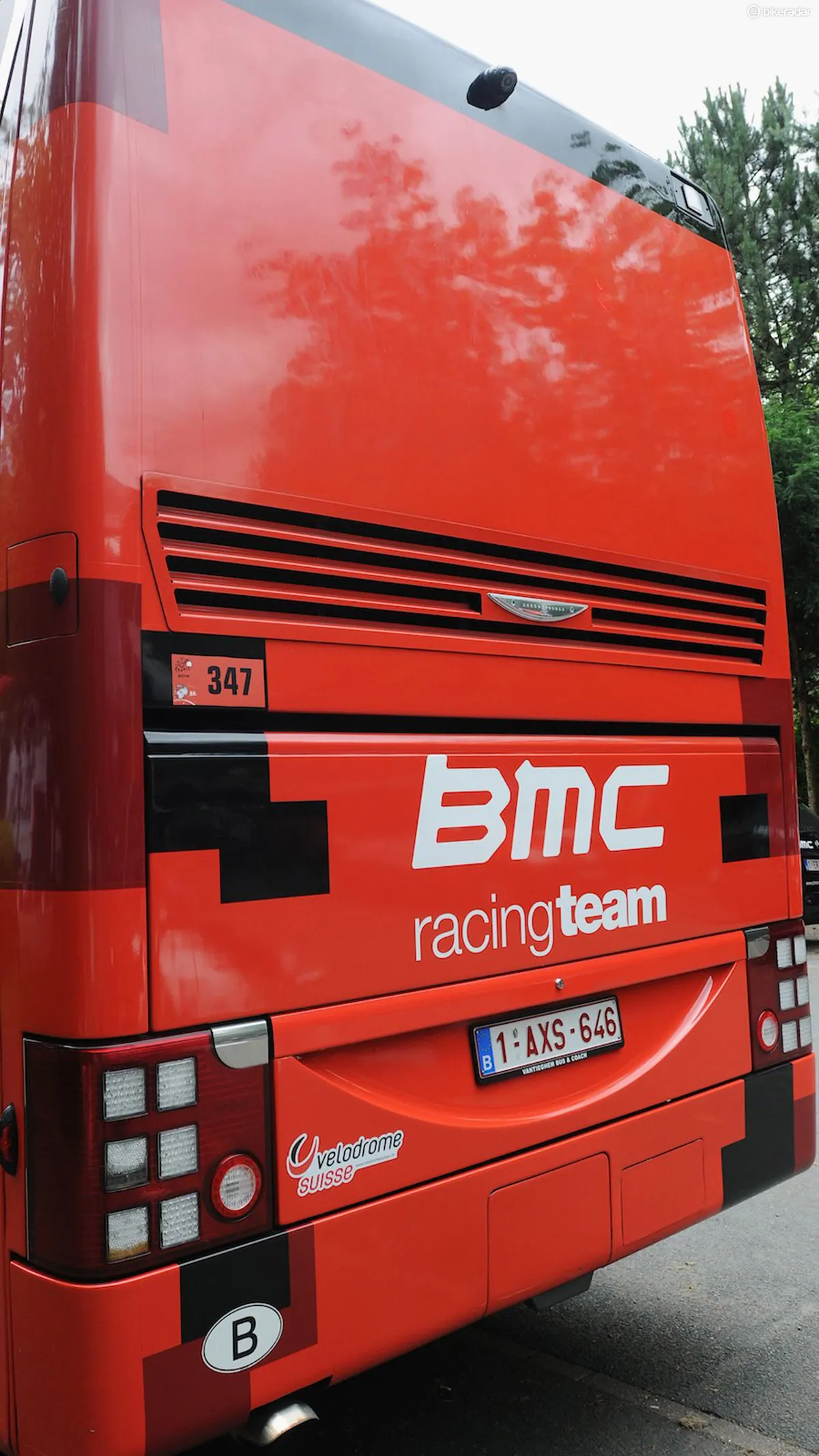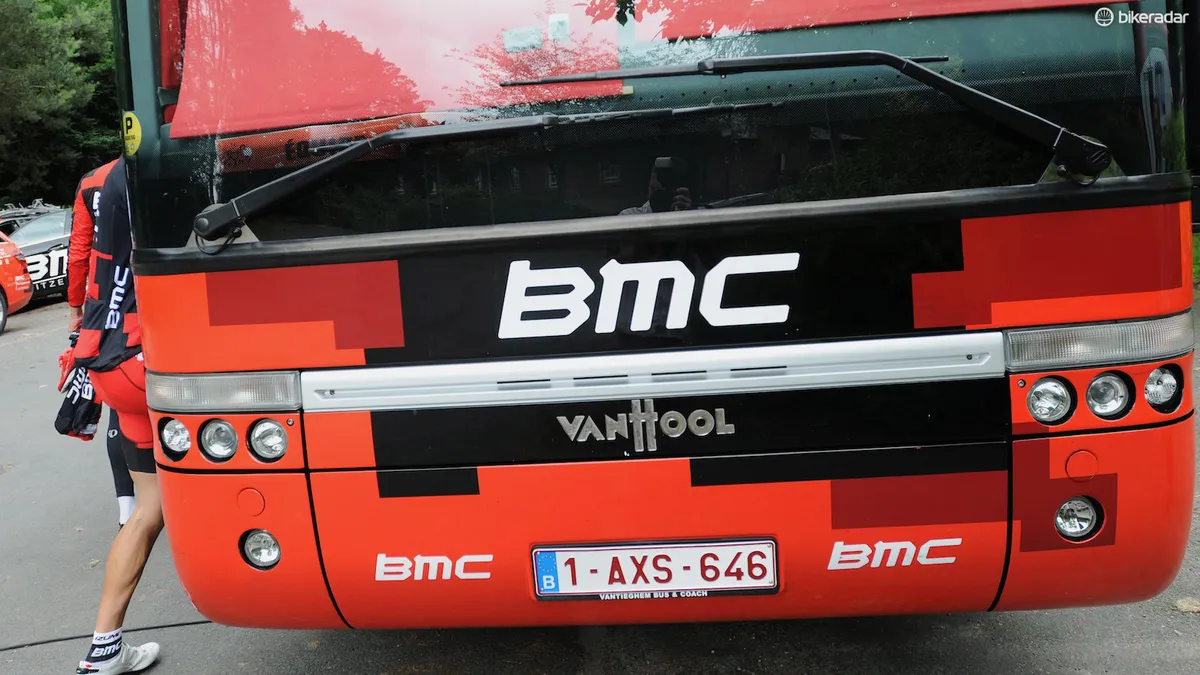Modern road racing places many demands on professional riders, and team buses have evolved to take a central role within the sport. Every top-level World Tour team has at least one bus, and some second-tier Professional Continental teams have one too.
As well as providing comfortable transport between hotel or airport and race start or finish, the bus offers the riders an oasis of calm away from the madding crowds, a mobile changing room with post-race washing facilities, a meeting room for daily strategy and storage for personal kit. It’s the hub of race day activity, and can also be pressed in to service for guest and VIP hospitality around race times.
Every bus is a bespoke design depending on the needs and the budget of the team, although there’s only so much that can be crammed in. BikeRadar was given a tour of the newer of BMC’s two buses, dating from 2011, by its full-time driver Matt Rompion gave us a guided tour.
If you think that the driver is simply employed to steer the bus from point A to B, you’d be mistaken. Rompion hails from Luxembourg, which is handily central for European races, but drives to BMC’s Belgian Service Course to collect the bus for race duties. Rompion averages 170-200 race days with the bus each season, so it’s safe to say his car spends a lot of time standing idle awaiting his return.
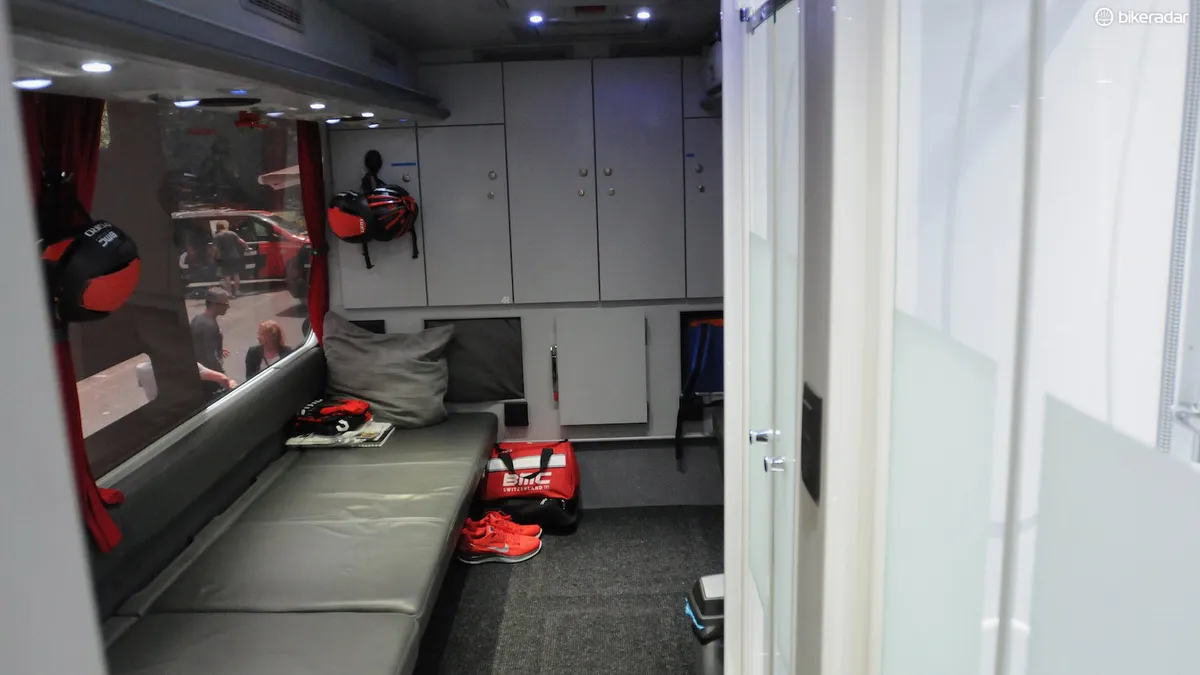
In the back, there are showers on the left, toilet on the right, storage, clock and the essential mirror for looking good when required
On top of driving the 12-metre, 19-ton Belgian-built Van Hool bus, Rompion is responsible for its daily running, from organising servicing and restocking supplies to running laundry cycles, and washing the beast inside and out – and on days as filthy as this year’s Tour de France stage 5 over the cobbles, that means cleaning the seats, carpets and showers after the riders have returned and divested themselves of grimy kit.
Alongside the driver is a fold-down seat, often filled by a team director or manager en route to stage starts, and behind is the main seating area. Eleven large, plush, grey leather seats, some with tables between, make up a spacious cabin for comfortable travelling. The riders decide where they prefer to sit, and furnish the space with personal race kit, casual shoes and their chosen entertainment for long journeys.
In our connected age, the team bus is a mobile wifi hotspot, operating like a huge wheeled phone, and allowing riders to stay online as much as they want while in transit. There is also a built-in entertainment system, showing television or movies via fold-down screens in the ceiling when on the move, or via a projector on a larger screen that rolls down inside the windscreen when stationary. But, a reminder on the driver’s dashboard prompts him to switch the bus’s SIM card whenever they cross a country border for a card specific to the new country, in order to avoid excessive data-roaming charges.
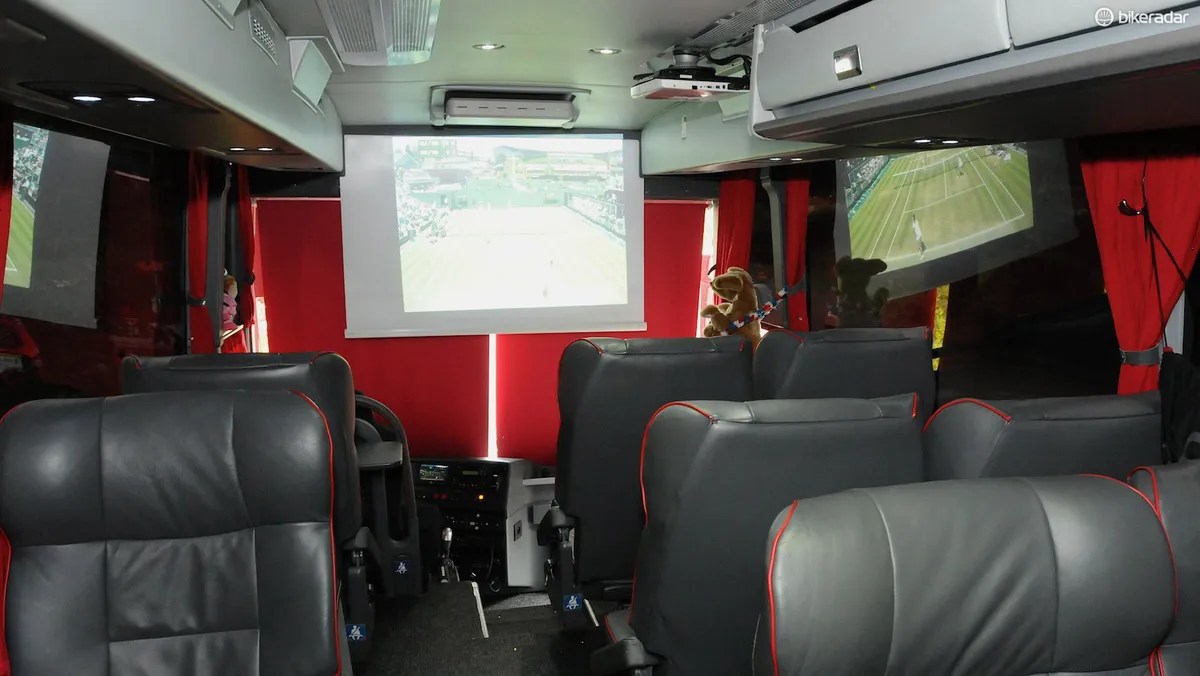
When stationary, a projector and screen can be used to show almost any TV shows or films - or the tennis from Wimbledon
In the centre of the bus is a small kitchen area, incorporating a sink, a pair of capsule coffee machines, fridge and wine fridge. Team owner Andy Rihs also owns a five-star hotel in Provence called La Coquillade, surrounded by its own vineyards, and the wine fridge is stocked with plenty of his finest for entertaining duties. With coffee and cycling so indelibly linked, we expected the coffee machines to be in permanent overdrive, but apparently many riders are reducing their coffee intake for dietary reasons, and at the 2014 Giro, only 150 coffees were drunk from the bus by all team personnel.
Opposite the kitchen area is the toilet, with a conventional toilet, urinal and hand basin. A wall chart reminds riders to keep an eye on their level of hydration, proving that even the best in the business are only human. The rear section of the bus contains two generous showers and a large open plan seating area that has multiple uses. Three riders can change here at once, and the bench seating is used for pre-race massage, gear storage and group meetings.
The bus carries a 150-litre water supply, which is enough for 10 showers, one cycle of the washing machine (which can be done while driving), and a supply for washing the outside of the vehicle too. Used water is held in another tank on board until it can be emptied later. The multitude of electrical items on board — air conditioning, lights, two fridges, freezer, washing machine, tumble dryer, coffee machines, TVs, projector, showers — are operated by a 25kw generator, which kicks in to life when needed if the bus is parked and it’s not hooked up to the mains at a hotel.

Signs in the men's room
The generator shares the bus’s diesel supply, which is understandably vast at 750 litres. With 480 horsepower, 8 gears and immense torque to navigate through the mountains, the weighty bus is hardly what you’d call fuel efficient. With so many demands on the fuel supply, a full tank can give a range as low as 2,000km, and depending on race schedule and route, each team bus usually covers between 50,000 and 70,000km per season. You don’t need to be a mathematician to know that keeping a £250,000 team bus rolling is quite a financial commitment.
Click through the gallery above for a detailed tour through the BMC Racing bus at the 2014 Tour de France.
